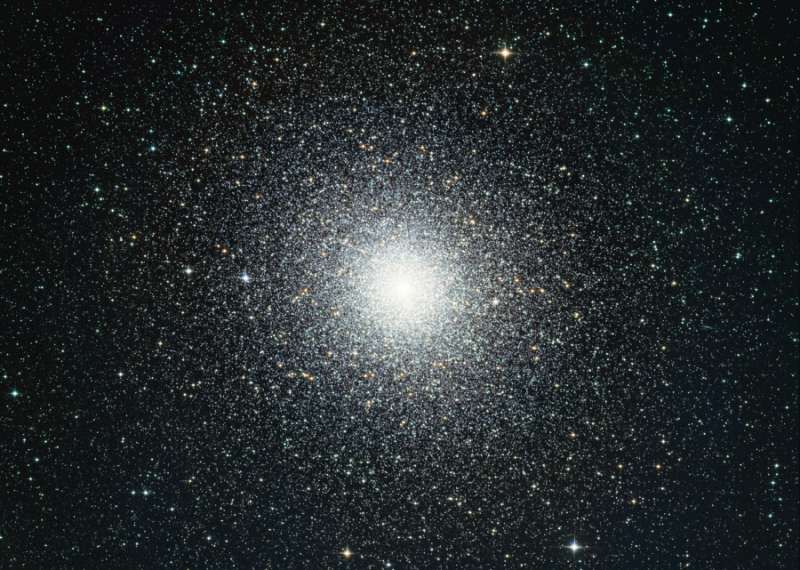Credit & Copyright: Dieter Willasch
(Astro-Cabinet)
Explanation:
Globular star cluster 47 Tucanae is a jewel of the southern sky.
Also known
as NGC 104, it roams
the halo of our Milky Way Galaxy
along with some 200 other globular star clusters.
The second brightest globular cluster (after
Omega Centauri)
as seen from planet Earth, it lies about 13,000 light-years away and
can be spotted naked-eye near the
Small Magellanic Cloud
in the constellation of
the Toucan.
The dense cluster is made up of several million
stars in a
volume
only about 120 light-years across.
Red giant stars
on the outskirts of the cluster are easy to pick out as yellowish stars in
this sharp
telescopic portrait.
Globular cluster 47 Tuc is also home to exotic
x-ray binary star systems.
1999 2000 2001 2002 2003 2004 2005 2006 2007 2008 2009 2010 2011 2012 2013 2014 2015 2016 2017 2018 2019 2020 2021 2022 2023 2024 2025 |
Январь Февраль Март Апрель Май Июнь Июль Август Сентябрь Октябрь Ноябрь Декабрь |
NASA Web Site Statements, Warnings, and Disclaimers
NASA Official: Jay Norris. Specific rights apply.
A service of: LHEA at NASA / GSFC
& Michigan Tech. U.
|
Публикации с ключевыми словами:
47 Tuc - 47 Тукана - globular cluster - Шаровое скопление
Публикации со словами: 47 Tuc - 47 Тукана - globular cluster - Шаровое скопление | |
См. также:
Все публикации на ту же тему >> | |
